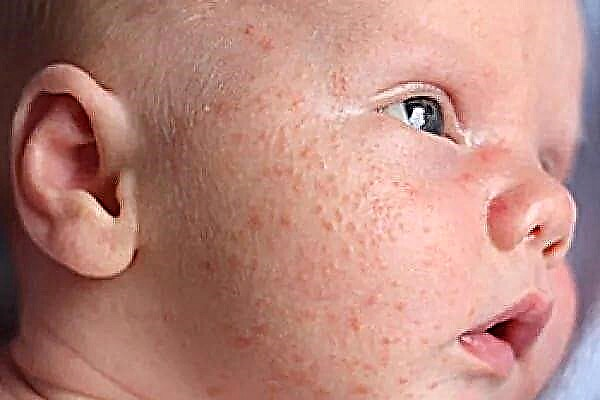It is difficult to visually determine how the worms look in the feces of a child. Parents should pay attention to the well-being of the child, and take into account the symptoms of the problem, which is mandatory. It is believed that helminthiasis is one of the most common diseases in babies. It is rather difficult to consider whether there is a worm in the feces, therefore, in case of suspicious manifestations, it is recommended to consult a doctor and get tested. They will help in determining the treatment program. Infection with parasites occurs most often during outdoor games and entertainment.

Girl washes her hands after a walk
Parents' misconceptions about worms
When a newborn baby appears in the home, many anxieties arise along with joy. One of them is helminth infestation. More than 2 million cases were officially recorded (data for 2018 for major cities around the world), so the fears are quite real.
Along with them, there are misconceptions, "signs" of infection, forcing parents to worry even more:
- A worm in a child's body makes him grind his teeth at night with varying intensity. This is true, but only partially. In the process of vital activity, worms secrete a special substance that negatively affects the work of the nervous system. Overstrain and is expressed in the night squeaking of teeth. The same symptom indicates a number of other diseases, therefore, treatment should not be started without examination.
- Abdominal pain. The intestines are not always the habitat of worms. Therefore, it is impossible to draw an unambiguous conclusion on this symptom. Sometimes helminthiasis is disguised as other diseases, such as a rash or an allergic reaction.
- You cannot get infected from pets. Research has shown that even pets can be the source of the problem. It is recommended to wash your hands with hot water after each contact with animals.
Also among the misconceptions is the opinion that helminth eggs do not survive in running chlorinated water. This is not so - they are present, but in smaller numbers.
Attention! In some cases, infections occur if well water is used without prior boiling.
Are worms always present in feces
For a long time without symptoms, worms can live in the child's body and not give out their presence even with a slight malaise of the baby. Therefore, it is not always possible to see them in the feces. If such a "neighborhood" is found, then the infection is extensive and requires immediate treatment.
How do they look
The appearance depends on the type of parasite. In 90% of cases, they can be recognized by the characteristic thin threads in the feces. Their color can be white or red.
In what cases are worms detected without difficulty
You can only find them with a strong infection. If there are few parasites in the body, then it will not be possible to visually examine them.
Types of helminths
Children with a 90% probability are at risk of contracting helminths, since they do not follow the recommendations and simply do not know about the danger. Parents will be able to find out about the presence of the disease only when it turns into an acute form.
Important! If quality treatment is not carried out, the disease will become chronic. Without timely and proper medical care, the immune system will constantly weaken. The functioning of all systems in the body will also be disrupted.
If children become infected with pinworms, then enterobiasis develops in parallel. This type of parasite chooses the small intestine for resettlement. Feature - for 14 days of its presence there, the worm of this species lays a large number of eggs.
Also, the child can become infected with ascaris. The peculiarity of these worms is that they grow to a considerable size - they can reach 40 cm in length. The place of their settlement is the intestines. If they are not removed, the harm to health will be higher than from pinworms.
Experts identify 3 groups of helminths that can infect the human body:
- Round parasitic organisms (from all cases are recorded in 60-70% of visits), they are also called nematodes. These include parasitic organisms such as pinworms, roundworms, whipworms and trichinella.
- Flat tapeworms (can be heard from doctors - cestodes). They include such worms as broad tapeworm, echinococcus, various types of tapeworms.
- Trematodes or flukes. Fluke, as well as schistosome, should be attributed to this species.
In addition, experts subdivide helminths into intestinal and non-intestinal. The habitat of the latter is in the organs of the digestive tract, liver, lungs, and muscles. Together with the blood, they then spread throughout the body, penetrate into systems and individual organs. In 90% of cases, worms settle in the digestive system. Feature - pinworms cause enterobiasis, and roundworms provoke the appearance of ascariasis.

Fruits and vegetables must be washed well before eating.
Symptoms of helminthiasis
You need to know which symptom indicates the presence of worms in a child. For a long time, the worm will not be able to conceal its presence in the body. Manifestations can easily be mistaken for other diseases, including those affecting the gastrointestinal tract. Feature - the exact cause of the manifestation of symptoms can be searched for more than one year. To understand that the helminth is at the heart is often possible by accident.
The main manifestations of parasitic diseases, which appeared under the influence of worms and proceed in an acute form, include the following signs:
- Disorder of digestive processes is noted.
- Nausea appears.
- Vomiting is sometimes present.
- In 90% of cases, bloating is observed.
- Temperature readings increase to 37 degrees and even 38.
- Signs of body intoxication appear.
- The chair changes its consistency.
- Severe allergic reactions on the skin are noted: there are rashes in the form of small dots (localization places - back, shoulders, neck, face), sometimes they are present throughout the body.
- Itching at the site of the rash.
- The head (not the temples) hurts more often than in the usual state, dizziness occurs (the intensity and frequency vary and depend on the individual characteristics of the child).
- Chills are present in varying degrees of manifestation (from mild to very pronounced).
- General lethargy and malaise are observed.
- Sleep is disturbed - it can be difficult to fall asleep, the duration of rest decreases significantly.
Acute symptoms lose their severity and gradually subside after 10-14 days. After the helminthiasis becomes chronic. In this case, other symptoms appear:
- Fatigue.
- The child loses perseverance, gets tired quickly.
- Digestive disorders (almost daily).
- Allergies are present, but the intensity is much less.
- Signs of colds (snot, cough).
It is known that helminths are more active in infants. A newborn baby is more susceptible to diseases, since his immune system is not yet strong enough. In this case, the worms in the feces of a small child will be noticeable when changing the diaper.
In infants, the following symptoms are:
- Acute temperature is present in 90% of cases.
- Behavior changes - babies fuss, become restless and nervous.
- Crying is constantly present.
- Allergic reactions and rashes appear faster and are more intense.
- Itching (if an infection with pinworms has occurred, then itching with increasing sensitivity will be in the area of the anus).
- Symptoms become prominent at night and subside during the day.
If all the symptoms, physiological and psychological manifestations of parasitic invasion have become almost invisible or weakened, this does not mean that there are no worms in the body.
Interesting. Worm diseases, even in a mild form, will not disappear on their own without the use of drugs, they cannot be allowed to flow. This is the peculiarity of the state.
Causes and methods of infection
Worms can enter the body under the influence of various factors. Most often, an infant suffers after contact with pets. Grown up children who have already started to walk may suffer after playing with soil and sand. The most common causes of helminthiasis:
- Dirty hands (after touching the ground, animals, other people's toys or things).
- Poorly washed food;
- Insufficient personal hygiene.
Nematodes live on fruits and vegetables, even plucked from their own garden, so they must first be thoroughly rinsed under running warm water. Insufficiently processed products of animal origin: meat, poultry or fish (heat treatment, and preferably roasting or long-term cooking is required) can also cause infection with worms. All children are required to be protected from the influence of the parasite, but the baby is needed most actively, since the symptoms will be pronounced.

Parasite eggs can also be found on the ground and plants
How to diagnose the presence of parasites
To identify the problem, a stool test is required. Together with the present symptoms and examination, the doctor makes a conclusion on the condition. Sometimes, to confirm the diagnosis, it is required to pass the test again.
Not every parent knows what worms look like in a small child. This is due to the fact that there are different types of such worms. They can actively move, but in the feces, already dead parasites are most often present. Babies need to be protected from their effects, since the newborn's immune system is too weak to withstand the problem. It is known that the parasite most often takes up residence in the intestines. As a result of how worms work and develop, various symptoms are observed in the body.



